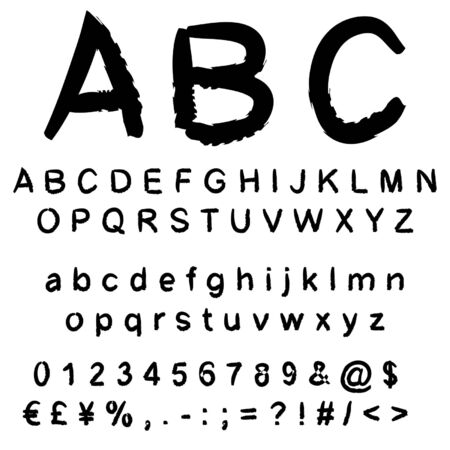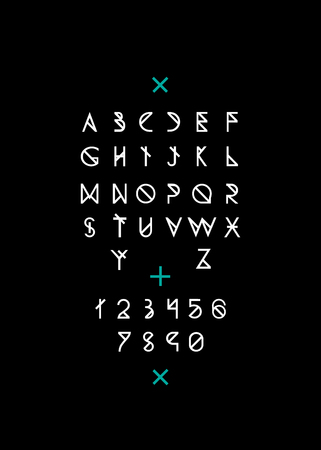1. Introduction
Dream interpretation has long held a place of intrigue and importance within both British and American cultures, offering insight into the subconscious mind and reflecting broader societal beliefs. While the act of deciphering dreams can be traced back to ancient civilisations, it is in the modern context that marked differences between British and American approaches have emerged. In Britain, dream analysis often intersects with literary traditions and psychological theories rooted in European scholarship. Conversely, in the United States, interpretations tend to blend clinical psychology with popular culture, resulting in a more commercialised and mainstream understanding. This comparative analysis seeks to explore how each culture interprets common dream symbols, highlighting not only the similarities but also the nuanced distinctions shaped by history, language, and social attitudes. By examining these perspectives side by side, this article aims to provide a comprehensive overview of how dream symbolism is perceived on both sides of the Atlantic and what this reveals about British and American cultural identities.
Historical and Cultural Contexts
To understand the divergent interpretations of common dream symbols in British and American contexts, it is essential to first examine the historical background and prevailing cultural attitudes towards dream analysis in both regions. Although the UK and the US share linguistic roots and many cultural similarities, their approaches to dream symbolism have evolved differently, shaped by unique philosophical, scientific, and social influences.
Origins of Dream Analysis
The British approach to dream interpretation has traditionally been influenced by a mixture of folklore, early psychological theories, and literary traditions. In contrast, the American perspective is deeply entwined with the rise of psychoanalysis, popular psychology, and a strong emphasis on individualism and self-discovery. The table below summarises key differences:
| United Kingdom | United States | |
|---|---|---|
| Historical Roots | Folklore, Victorian mysticism, Freudian influence filtered through literary culture | Direct adoption of Freudian and Jungian theory; popularisation through mass media |
| Cultural Attitudes | Scepticism towards psychoanalysis; dreams often seen as reflections of daily life or omens | Embrace of self-exploration; dreams viewed as avenues for personal growth or trauma resolution |
| Interpretative Frameworks | Symbolism rooted in national myths and collective experiences (e.g., monarchy, social class) | Focus on individual achievement, freedom, and personal anxieties (e.g., success, mobility) |
Influence of Literature and Media
British literature, from Shakespearean plays to 20th-century novels, often treats dreams as narrative devices—portals to fate or morality tales—while American media tends to frame dreams as opportunities for self-realisation or warnings about inner conflict. This literary heritage subtly guides public perceptions in each country.
Societal Trends and Modern Perspectives
In recent decades, British society has leaned towards rational scepticism and secularism, with mainstream attitudes regarding dreams reflecting caution against over-interpretation. Conversely, American culture’s enduring fascination with self-help movements and therapy continues to legitimise dream analysis as a tool for understanding one’s subconscious motivations.
Setting the Stage for Divergent Interpretations
This combination of historical tradition, literary influence, and societal values has resulted in distinct frameworks for interpreting common dream symbols. Recognising these foundational differences provides crucial context for comparing how specific symbols are understood across both sides of the Atlantic.

3. Core Differences in Symbolic Interpretation
The symbolic meaning attributed to common dream motifs diverges notably between British and American cultures, shaped by unique idioms, societal narratives, and underlying values. By examining frequently reported dreams—such as teeth falling out, flying, or being chased—we can discern nuanced interpretations rooted in each nation’s collective psyche.
Teeth Falling Out: Anxiety or Social Embarrassment?
In the United States, dreams about teeth falling out are widely interpreted as signals of deep-seated anxiety, often linked to personal appearance or fears of ageing and loss of control. The American idiom “toothless” sometimes connotes a lack of power or effectiveness, reinforcing this interpretation. Conversely, within the UK, such dreams are more commonly associated with embarrassment or fear of saying the wrong thing—a nod to the British cultural preoccupation with social decorum and “putting one’s foot in it.” This subtle difference reveals how Americans might internalise concerns about self-image, while Britons focus more on social faux pas.
Flying: Freedom or Escapism?
Dreams of flying typically evoke notions of liberation. In the US context, this motif is often interpreted through the lens of “the sky’s the limit”—a phrase that mirrors the country’s aspirational ethos and individualistic spirit. Americans may see such dreams as emblematic of ambition or breaking free from constraints. Meanwhile, British interpretations are shaded by a streak of pragmatism; flying dreams might be construed as escapism from daily routines or responsibilities—echoed in expressions like “having one’s head in the clouds.” Here, the contrast lies between American optimism and British scepticism regarding boundless freedom.
Being Chased: Confrontation vs. Avoidance
The experience of being chased in a dream is broadly understood as a manifestation of stress or avoidance. However, Americans often interpret these scenarios through an action-oriented lens—“facing your demons”—suggesting a call to confront challenges head-on. The British perspective is subtly different; such dreams are more likely to be seen as anxiety about uncomfortable situations or impending obligations, aligning with idioms like “dodging a bullet” or “trying to keep out of trouble.” These distinctions reflect differing cultural attitudes towards conflict: proactive confrontation versus understated evasion.
Cultural Narratives at Play
These divergent interpretations underscore how local language and cultural associations infuse dream analysis with distinct meaning on either side of the Atlantic. Whether it’s the American penchant for bold self-improvement or the British inclination towards social harmony and understatement, the symbolism embedded within our dreams is continually refracted through the prism of national identity.
4. Language and Colloquialisms in Dream Analysis
Language serves as a powerful lens through which cultural nuances manifest in dream interpretation. The British and American traditions employ distinct vocabularies, colloquial expressions, and culturally embedded terms that shape how individuals articulate, understand, and record their dreams.
Distinctive Terminologies
British dream analysis often incorporates terms rooted in local folklore, historical references, and regional slang. For example, dreams about “the Tube” or “double-decker buses” are uniquely British symbols, whereas Americans might reference “subways” or “yellow school buses.” These linguistic choices not only reflect daily life but also influence symbolic associations within each culture.
Comparison Table: Common Terms in Dream Interpretation
| Dream Symbol | British Expression | American Expression |
|---|---|---|
| Money | Quid, notes, fiver | Bucks, bills, five-dollar bill |
| Transportation | The Tube, lorry, boot (car) | Subway, truck, trunk (car) |
| Home | Semi-detached, flat | Duplex, apartment |
| School Life | Revision (studying), A-levels | Studying for finals, SATs/ACTs |
| Weather | Lashing rain, drizzle | Pouring rain, light rain |
Culturally Embedded Idioms and Phrases
The idiomatic language used to describe dreams further highlights the divergence between British and American interpretations. For instance, a Briton might say they “had a nightmare about missing the last train,” while an American could express anxiety over “missing the bus.” Such idioms stem from everyday experiences and public transportation systems unique to each nation.
The Impact on Symbolic Meaning
This divergence is not merely semantic; it influences interpretative frameworks. British dream literature may emphasise themes of restraint or formality—mirroring broader social norms—while American texts might focus on ambition or individualism. These tendencies are reinforced by the specific language chosen when recounting dream narratives.
Summary of Linguistic Influence on Dream Interpretation Practices:
- Vocabulary Choices: Reflect national identity and lived experience.
- Colloquialisms: Colour interpretations with culturally specific meaning.
- Cultural References: Embed local values and anxieties within dream symbolism.
- Linguistic Nuance: Shapes the advice or analysis offered by interpreters in both traditions.
The comparative analysis of language and colloquialisms demonstrates how deeply culture permeates even the subconscious world of dreams, revealing both shared motifs and uniquely national perspectives within British and American dream interpretation.
5. Influence of Popular Media and Psychoanalytic Traditions
Analysis of the Impact of Popular Media
Popular media plays a pivotal role in shaping public perceptions of dream symbols on both sides of the Atlantic, yet British and American portrayals often diverge in tone and emphasis. In the UK, television dramas, radio programmes like BBC’s “In Our Time,” and literary adaptations tend to approach dream symbolism with scepticism or understated irony. British media often frames dreams as reflections of social anxieties or personal quirks, rather than overtly mystical experiences. By contrast, American media—ranging from Hollywood films to self-help books—frequently presents dreams as profound messages from the subconscious, ripe with meaning and personal guidance. This tendency towards sensationalism amplifies the perception that dreams hold transformative power, encouraging viewers and readers to seek deeper significance in common symbols such as flying or falling.
The Literary Landscape: British Subtlety vs. American Directness
British literature, from Shakespeare to Ian McEwan, typically employs dream sequences to reveal character flaws or social critique rather than straightforward prophecy or psychological revelation. The language is often elliptical, imbued with ambiguity. Conversely, American authors—from Nathaniel Hawthorne to modern novelists—tend to use dreams as direct narrative devices that propel characters toward epiphany or catharsis. This literary divergence reinforces national attitudes toward interpreting dream symbols: the British leaning towards analytical restraint, the Americans towards interpretive boldness.
Divergent Psychoanalytic Traditions
The psychoanalytic traditions underpinning dream interpretation also differ markedly between Britain and America. In Britain, Freudian theories initially found fertile ground among intellectual circles but were gradually tempered by the rise of object relations theory—a distinctly British contribution led by figures such as Melanie Klein and Donald Winnicott. These approaches emphasise early relationships and subtle internal dynamics over universal symbolism. In America, Freudian psychoanalysis remained dominant longer and was later supplemented by Jungian ideas that popularised archetypal symbols—such as snakes or water—as universally meaningful elements within dreams. This has led to a more prescriptive approach in American interpretations, whereas British analysts are more likely to contextualise symbols within individual experience and cultural background.
Media and Therapy: Shaping Public Discourse
The interplay between media representations and therapeutic practices further deepens these regional differences. British public discourse on dreams is often laced with humour or self-deprecation, reflecting a cultural hesitancy to take symbolic interpretations at face value. In contrast, American talk shows, podcasts, and therapy sessions frequently discuss dreams in earnest terms, treating them as legitimate sources of insight into one’s psyche.
Summary
Ultimately, the impact of popular media and psychoanalytic tradition creates a feedback loop: in Britain, a culture of interpretive modesty is both reflected in and reinforced by its media and academic approaches; in America, bold symbolic interpretation is normalised through its literature, visual culture, and therapeutic conversations. These factors collectively shape how common dream symbols are perceived and discussed within each region.
6. Case Studies and Anecdotes
To further illustrate the nuanced differences in dream interpretation between British and American cultures, this section presents selected case studies and anecdotal evidence. By examining specific examples, we can observe how cultural context shapes individual understanding of common dream symbols.
Case Study 1: The Dream of Losing Teeth
British Perspective
A British participant reported dreaming about losing teeth before a major job interview. She interpreted the dream as a sign of anxiety about appearing “unpolished” or “not presentable,” reflecting the British cultural emphasis on composure and restraint. The dream was discussed over tea with friends, who referenced the classic British sentiment of “keeping a stiff upper lip” despite underlying insecurity.
American Perspective
An American counterpart experiencing the same dream associated it with fear of failure or loss of control, frequently linking the symbolism to personal success and self-image. In conversation, peers suggested it reflected a need to “take charge” or “boost confidence,” echoing American values around assertiveness and personal agency.
Case Study 2: Being Chased
British Interpretation
A Briton described recurrent dreams of being chased through foggy London streets. The prevailing interpretation was connected to avoidance of confrontation, drawing on the cultural trait of indirectness in conflict resolution. Friends advised “not making a fuss” and considering what issues might be best handled subtly.
American Interpretation
An American with similar dreams viewed them as an impetus for self-examination and direct action. The advice from peers was typically to “face problems head-on,” aligning with the more overt problem-solving approach prevalent in American culture.
Anecdote: Flying Dreams
UK Context
In informal gatherings, British individuals often describe flying dreams as whimsical escapes from daily monotony, sometimes laced with gentle humour about wanting to “soar above dreary weather.” Such dreams are seen as harmless indulgences rather than calls to action.
US Context
Conversely, Americans recount flying dreams as empowering experiences tied to ambition and freedom. Friends may encourage interpreting these dreams as signs to “reach for your goals,” reflecting an aspirational mindset.
Cultural Nuances Highlighted
These case studies underscore how shared dream motifs are filtered through distinct cultural values—British interpretations tending towards subtlety, understatement, and social harmony; American readings favouring directness, personal achievement, and self-expression. These anecdotes reveal that while the symbols may be universal, their meanings are deeply shaped by local attitudes and conversational norms.
7. Conclusion and Implications
The comparative analysis of British and American interpretations of common dream symbols reveals distinct cultural underpinnings that meaningfully shape both personal reflection and therapeutic practice. While both nations share a foundation in Western psychoanalytic thought, the British approach often leans towards understated symbolism, contextual nuance, and a tendency to view dreams as subtle reflections of social realities or emotional undercurrents. In contrast, the American perspective typically favours more explicit interpretations, individual empowerment, and the pursuit of actionable insights derived from dream content.
This divergence has practical implications. In British settings, dream analysis may be approached with a certain reserve, favouring introspection and interpretive ambiguity; this aligns with broader cultural values of privacy and understatement. Therapeutic conversations in Britain might therefore prioritise gentle exploration over definitive conclusions. Conversely, American therapists and individuals are more likely to seek clear meaning and direct application, echoing a cultural ethos of self-improvement and assertiveness.
The synthesis of these findings suggests that dream interpretation is not merely an internal exercise but is deeply informed by prevailing societal attitudes towards the self, community, and the process of meaning-making. For practitioners operating across both contexts—or for individuals navigating cross-cultural identities—an awareness of these differences can foster more sensitive, effective engagement with dreams as vehicles for insight and growth. Ultimately, acknowledging these cultural distinctions enriches our understanding of the personal significance of dreams and enhances the therapeutic value they can provide within diverse Anglophone societies.


